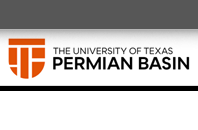
Publications & Presentations
Are controlled companies underperforming?
Document Type
Article
Publication Date
2020
Abstract
Research Question: Are controlled companies underperforming in the United States? Motivation: Anecdotal evidence shows that the average market capitalization of controlled firms increased from $8.3 billion in 2005 to $20.6 billion in 2015. Given the rapid increase in capitalization, the group of controlled companies has become an important player in the US capital market. However, little is known about controlled companies. Idea: We examine whether controlled companies are underperforming relative to noncontrolled companies in the United States. Data: The data sample consists of 351 listed companies in the United States for the fiscal year 2014. Tools: 176 controlled companies were manually collected by performing the keyword search “controlled company” from the U.S. Securities and Exchange Commissions (SEC) website via “www.seekedgar.com/”. Specifically, we search “controlled company” from proxy statement DEF 14A. Each controlled company is verified after reading through the proxy statement. Findings: Using 176 controlled companies and 176 random sampled non-controlled companies, we find that controlled companies are underperforming compared to noncontrolled companies. Contribution: To the best of our knowledge, we are the first to collect the group of controlled companies in the US and we are among the first to study how firm performs under the type II agency problem (Pantzalis et al. 1998). We contribute to the stream of literature on how ownership structure (e.g., family-controlled firms) affects firm performance (Anderson & Reeb, 2003). Consistent with the findings from family-controlled firms, we show that ownership structure affects firm performance. Out study sheds light on the important role of controlled companies in the US capital market.
Recommended Citation
Accounting and Management Information Systems Vol. 19, No. 4, pp. 759-777, 2020 DOI: http://dx.doi.org/10.24818/jamis.2020.04006

